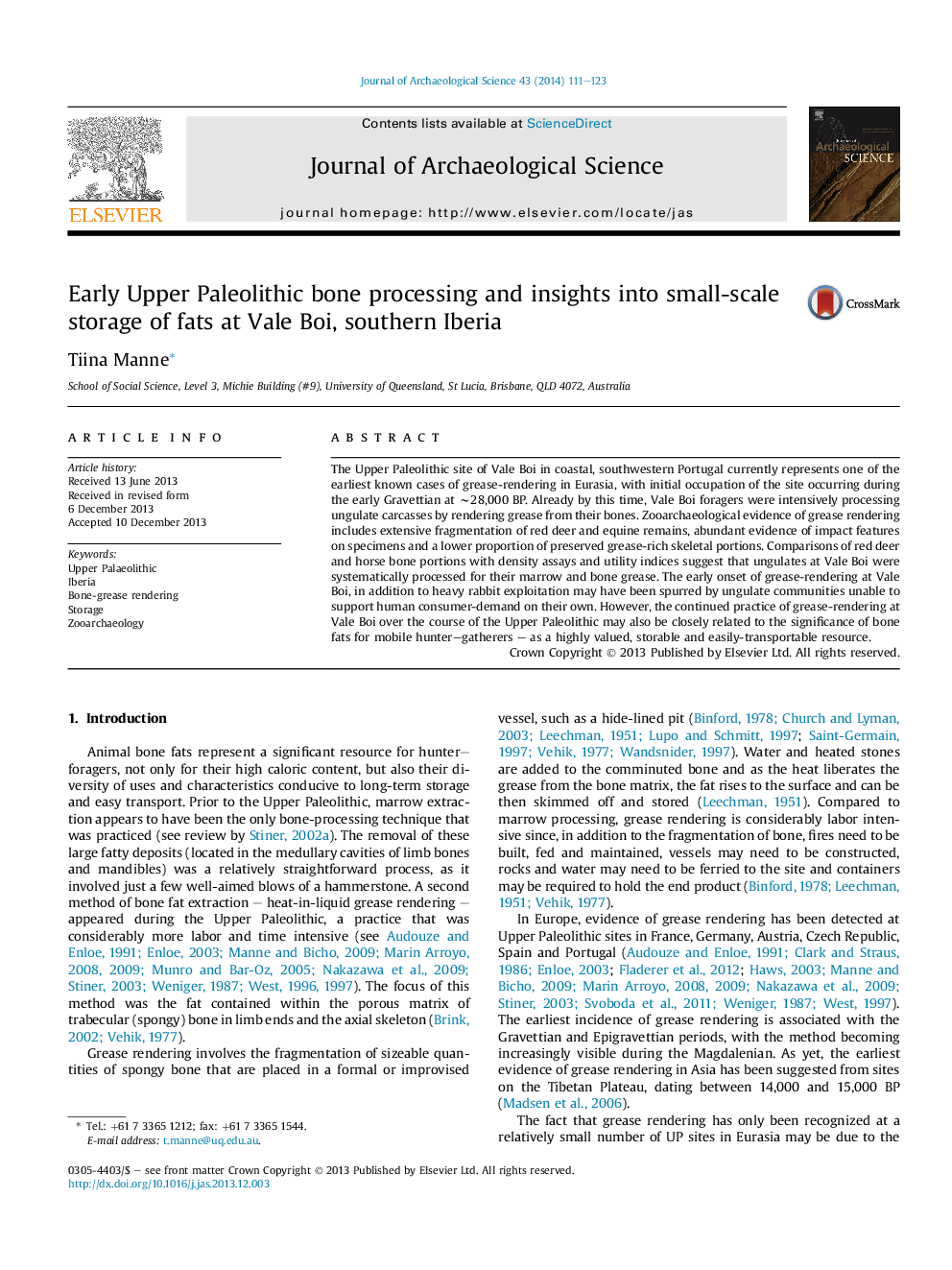| Article ID | Journal | Published Year | Pages | File Type |
|---|---|---|---|---|
| 7443610 | Journal of Archaeological Science | 2014 | 13 Pages |
Abstract
The Upper Paleolithic site of Vale Boi in coastal, southwestern Portugal currently represents one of the earliest known cases of grease-rendering in Eurasia, with initial occupation of the site occurring during the early Gravettian at â¼28,000Â BP. Already by this time, Vale Boi foragers were intensively processing ungulate carcasses by rendering grease from their bones. Zooarchaeological evidence of grease rendering includes extensive fragmentation of red deer and equine remains, abundant evidence of impact features on specimens and a lower proportion of preserved grease-rich skeletal portions. Comparisons of red deer and horse bone portions with density assays and utility indices suggest that ungulates at Vale Boi were systematically processed for their marrow and bone grease. The early onset of grease-rendering at Vale Boi, in addition to heavy rabbit exploitation may have been spurred by ungulate communities unable to support human consumer-demand on their own. However, the continued practice of grease-rendering at Vale Boi over the course of the Upper Paleolithic may also be closely related to the significance of bone fats for mobile hunter-gatherers - as a highly valued, storable and easily-transportable resource.
Related Topics
Physical Sciences and Engineering
Materials Science
Materials Science (General)
Authors
Tiina Manne,
